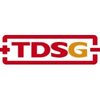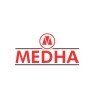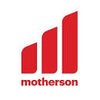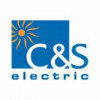Filter interviews by
BHEL Interview Questions and Answers
78 Interview questions
Effective project site safety management involves planning, training, monitoring, and continuous improvement to minimize risks.
Conduct a thorough risk assessment before starting the project to identify potential hazards.
Implement safety training programs for all workers, ensuring they understand safety protocols and emergency procedures.
Regularly inspect the site for compliance with safety standards and address an...
In an accident, prioritize safety, assess the situation, provide aid, and report to authorities.
Ensure personal safety first; move to a safe location if possible.
Assess the situation: check for injuries and hazards.
Call emergency services immediately if there are injuries.
Provide first aid if trained and it's safe to do so.
Document the scene with photos and notes for reporting.
Notify your supervisor or safety offi...
Communicating in a no safety culture requires strategic approaches to foster awareness and engagement.
Identify key stakeholders and engage them in discussions about safety concerns.
Use data and real-life examples to illustrate the importance of safety measures.
Implement regular safety meetings to create a platform for open dialogue.
Encourage anonymous reporting of safety issues to promote honesty without fear of r...
AI enhances cost accounting and bookkeeping by automating processes, improving accuracy, and providing insightful analytics.
Automation of Data Entry: AI can automate the data entry process, reducing human error and saving time. For example, using OCR technology to scan invoices.
Real-Time Financial Monitoring: AI tools can provide real-time insights into financial data, allowing businesses to make informed decision...
Electrical systems have evolved from simple circuits to complex networks, enhancing efficiency and reliability in various applications.
Early electrical systems were based on direct current (DC) and simple circuits, like Thomas Edison's light bulb.
The introduction of alternating current (AC) by Nikola Tesla allowed for long-distance power transmission, revolutionizing electrical distribution.
Modern electrical syste...
Heat is energy transfer due to temperature difference; temperature measures particle energy.
Heat is energy in transit, while temperature is a measure of energy within a substance.
Heat flows from hot to cold; for example, a hot cup of coffee cools down in a cooler room.
Temperature is measured using scales like Celsius or Fahrenheit; for instance, water freezes at 0°C.
Heat can change the state of matter, like meltin...
In five years, I envision myself as a seasoned accounts officer, leading projects and mentoring junior staff while driving financial efficiency.
Progressing to a senior accounts officer role, overseeing larger projects and budgets.
Developing expertise in financial analysis and reporting, contributing to strategic decision-making.
Mentoring junior staff, sharing knowledge and fostering a collaborative team environmen...
AC and DC are two types of electrical currents with different characteristics.
AC stands for alternating current, which periodically changes direction.
DC stands for direct current, which flows in one direction.
AC is commonly used in household appliances and power distribution systems.
DC is commonly used in batteries and electronic devices.
AC can be easily converted to different voltages using transformers.
DC is mor...
Isolators are devices used to separate a specific area or process from its surroundings to prevent contamination or exposure.
Glove box isolator
Containment isolator
Pharmaceutical isolator
Biological safety cabinet
A magnetic circuit is a closed path followed by magnetic flux.
Consists of a magnetic material that conducts magnetic flux
Includes a source of magnetic field (e.g. magnet)
May have air gaps or non-magnetic materials that affect the flow of magnetic flux
BHEL Interview Experiences
121 interviews found
Interview Questionnaire
7 Questions
- Q1. Why should we recruit you?
- Ans.
I have the necessary skills, experience, and passion to drive the company towards success.
Proven track record of achieving targets and leading teams
In-depth knowledge of industry trends and market analysis
Strong communication and interpersonal skills
Passionate about driving growth and innovation
Ability to adapt to changing environments and challenges
- Q2. Would you like a job in Rand D department?
- Ans.
Yes, I would be interested in a job in Rand D department.
I have a strong background in research and development.
I am passionate about innovation and problem-solving.
I believe that Rand D is a crucial department for the growth and success of any company.
I am excited about the opportunity to work with a team of experts in Rand D.
I am confident that I can contribute to the department's goals and objectives.
- Q3. Questions on work hardening, corrosion, powder metallurgy- nucleation and growth
- Q4. What makes stainless steel corrosion-resistant?
- Ans.
Stainless steel is corrosion-resistant due to the presence of chromium.
Chromium forms a thin layer of oxide on the surface of the steel, which prevents further corrosion.
The amount of chromium in stainless steel determines its level of corrosion resistance.
Other elements like nickel and molybdenum can also contribute to corrosion resistance.
Stainless steel is commonly used in applications where corrosion resistance is ...
- Q5. What coatings are made on turbine blades and why?
- Ans.
Turbine blades are coated with thermal barrier coatings (TBCs) to protect them from high temperatures and corrosion.
TBCs are made of ceramic materials such as zirconia and alumina
TBCs help to reduce the heat transfer from the hot gas to the blade
TBCs also protect the blade from oxidation and corrosion
Other coatings such as thermal spray coatings and diffusion coatings are also used for turbine blades
Thermal spray coati...
- Q6. What does BHEL manufacture?
- Ans.
BHEL manufactures power generation equipment, transmission systems, transportation equipment, and industrial products.
BHEL manufactures power generation equipment such as boilers, turbines, and generators.
They also manufacture transmission systems like transformers and switchgears.
BHEL produces transportation equipment such as locomotives and electric vehicles.
They manufacture industrial products like valves, heat exch...
- Q7. Questions on blast furnace, connecting rods etc.
Interview Preparation Tips
Experience: No questions on internships/project. No Test. No GD.
General Tips: 1. Prepare for aptitude test (in general, not for this company) as MME students are generally out of practice for such questions.
2. Try and improve your communication skills
3. CPI really matters
4. It will be helpful if you have done good projects in your tenure here.
5. Generally govt. companies/Public Sector companies shortlist only on CPI basis
Skills: Steel Making , Mechanical Behavior of Materials , Environmental Degradation
College Name: IIT- Kanpur
I applied via Approached by Company and was interviewed in Nov 2024. There were 2 interview rounds.
(4 Questions)
- Q1. Transfarmer and semiconductor
- Q2. Singal phase and three phase
- Q3. Hystrocal losses and
- Q4. Self introduced
(2 Questions)
- Q1. Machine working
- Q2. Rotar current situation
Interview Preparation Tips
I appeared for an interview in Dec 2024.
(2 Questions)
- Q1. If I don't understand anything then should I teach him?
- Q2. If I make any mistake, will I be fired?
Interview Preparation Tips
I appeared for an interview in Jul 2024.
(2 Questions)
- Q1. What are diifferent AC And DC
- Ans.
AC and DC are two types of electrical currents with different characteristics.
AC stands for alternating current, which periodically changes direction.
DC stands for direct current, which flows in one direction.
AC is commonly used in household appliances and power distribution systems.
DC is commonly used in batteries and electronic devices.
AC can be easily converted to different voltages using transformers.
DC is more sta...
- Q2. Which are type of solar
- Ans.
There are mainly three types of solar energy systems: solar photovoltaic (PV), solar thermal, and concentrated solar power (CSP).
Solar photovoltaic (PV) systems convert sunlight directly into electricity using solar panels.
Solar thermal systems use sunlight to heat water or air for use in buildings or to generate electricity.
Concentrated solar power (CSP) systems use mirrors or lenses to concentrate sunlight onto a sma...
(2 Questions)
- Q1. Where are type of insulator
- Ans.
Insulators are used in electrical systems to prevent the flow of electricity. They can be found in various locations.
Insulators are commonly found on electrical poles to support power lines.
Insulators are also used in electrical devices to prevent electrical current from flowing where it shouldn't.
Insulators can be made of materials such as glass, porcelain, or plastic.
Insulators are crucial in maintaining the safety a...
- Q2. Which are type of isolator
- Ans.
Isolators are devices used to separate a specific area or process from its surroundings to prevent contamination or exposure.
Glove box isolator
Containment isolator
Pharmaceutical isolator
Biological safety cabinet
(2 Questions)
- Q1. What are transformer
- Ans.
Transformers are electrical devices that transfer electrical energy between two or more circuits through electromagnetic induction.
Transformers consist of primary and secondary coils wound around a core
They can step up or step down voltage levels
Common examples include power transformers used in electrical substations
- Q2. Which are type transformer
- Ans.
There are various types of transformers including power transformers, distribution transformers, instrument transformers, etc.
Power transformers are used in power generation and transmission
Distribution transformers are used to supply power to homes and businesses
Instrument transformers are used for measuring voltage and current levels
Auto transformers are used for voltage regulation
Isolation transformers are used to i...
(2 Questions)
- Q1. What are loss transformer
- Ans.
Loss transformers are transformers that experience a decrease in efficiency or performance due to various factors.
Loss transformers can be caused by factors such as overheating, overloading, poor maintenance, or insulation breakdown.
Loss transformers can result in decreased energy efficiency, increased energy consumption, and potential equipment damage.
Examples of loss transformers include those found in power distribu...
- Q2. Type of transformer
- Ans.
Transformers are classified based on their construction, cooling method, and purpose.
Transformers can be classified as core type or shell type based on their construction.
They can also be classified as dry type or oil-filled based on their cooling method.
Transformers can be power transformers, distribution transformers, instrument transformers, etc. based on their purpose.
(2 Questions)
- Q1. Which are inverter
- Ans.
Inverters are electronic devices that convert direct current (DC) to alternating current (AC) for use in electrical systems.
Inverters are commonly used in solar power systems to convert DC electricity generated by solar panels into usable AC electricity.
They are also used in backup power systems to convert DC power from batteries into AC power during power outages.
Inverters come in various sizes and types, including gr...
- Q2. What are type of rectifier
- Ans.
Rectifiers are electronic devices used to convert alternating current (AC) to direct current (DC) by allowing current to flow in only one direction.
Rectifiers are classified into two main types: half-wave rectifiers and full-wave rectifiers.
Half-wave rectifiers allow current to flow in one direction during one half of the AC cycle, while full-wave rectifiers allow current to flow in one direction during both halves of ...
(2 Questions)
- Q1. Where are conductor
- Ans.
Conductors are typically found in electrical systems and are used to carry electrical current.
Conductors are commonly found in electrical wires and cables.
They are used to transmit electricity from a power source to a device or appliance.
Examples of conductors include copper wires, aluminum wires, and metal bars.
Conductors have low resistance to electrical current flow.
- Q2. What this magnetic circuit
- Ans.
A magnetic circuit is a closed path followed by magnetic flux.
Consists of a magnetic material that conducts magnetic flux
Includes a source of magnetic field (e.g. magnet)
May have air gaps or non-magnetic materials that affect the flow of magnetic flux
Interview Preparation Tips
I appeared for an interview in Mar 2025, where I was asked the following questions.
- Q1. What distinguishes heat from temperature? Heat is the transfer of thermal energy between systems due to a temperature difference. It is measured in joules (J) or calories (cal) and flows from a hotter obje...
- Ans.
Heat is energy transfer due to temperature difference; temperature measures particle energy.
Heat is energy in transit, while temperature is a measure of energy within a substance.
Heat flows from hot to cold; for example, a hot cup of coffee cools down in a cooler room.
Temperature is measured using scales like Celsius or Fahrenheit; for instance, water freezes at 0°C.
Heat can change the state of matter, like melting ice...
- Q2. Engineering Drawing & CAD
I appeared for an interview in Apr 2025, where I was asked the following questions.
- Q1. Lt ht line 33 kv
- Q2. Lt ht line33 kv
- Q3. Lt ht line33
Interview Preparation Tips
(2 Questions)
- Q1. Plot no 02 sabji form shahpura
- Q2. Plot no 02 bhopal m
(2 Questions)
- Q1. Plot no 02 sabji form
- Ans.
Plot no 02 sabji form is a form used for recording details of vegetables grown in Plot no 02.
Plot no 02 sabji form is used by farmers to keep track of the types and quantities of vegetables grown in Plot no 02.
The form may include fields for recording the date of planting, type of vegetable, quantity harvested, and any notes on the condition of the crop.
Examples of vegetables that may be recorded on the form include to...
- Q2. Bhopal Madhya Pradesh
I applied via Campus Placement and was interviewed in May 2024. There were 2 interview rounds.
Objective test with electronic and communication questions
(2 Questions)
- Q1. Ask questions from your cv
- Q2. Ask about yoir intrest
- Ans.
I am passionate about renewable energy solutions and innovative electrical systems that enhance efficiency and sustainability.
I enjoy working on solar energy projects, like designing solar panel layouts for residential buildings.
I have a keen interest in smart grid technology, which optimizes energy distribution and consumption.
I am fascinated by electric vehicle charging infrastructure and its role in promoting sustai...
Interview Preparation Tips
- Electronic and communication
I appeared for an interview in Dec 2024, where I was asked the following questions.
- Q1. Tell me about yourself
- Q2. Project regarding
- Q1. With respective subjects
- Q2. With attitude and GK
- Q3. Professional skill
APTITUDE TEST GENERAL,FINANCE,ETC
(2 Questions)
- Q1. READY TO WORK ANYWHERE
- Q2. WHERE DO YOU SEE 5 YEARS DOWN THE LINE
- Ans.
In five years, I envision myself as a seasoned accounts officer, leading projects and mentoring junior staff while driving financial efficiency.
Progressing to a senior accounts officer role, overseeing larger projects and budgets.
Developing expertise in financial analysis and reporting, contributing to strategic decision-making.
Mentoring junior staff, sharing knowledge and fostering a collaborative team environment.
Imp...
Interview Preparation Tips
Top trending discussions






BHEL Interview FAQs
Some of the top questions asked at the BHEL interview -
The duration of BHEL interview process can vary, but typically it takes about less than 2 weeks to complete.
Tell us how to improve this page.
BHEL Interviews By Designations
- BHEL Senior Engineer Interview Questions
- BHEL Electrical Engineer Interview Questions
- BHEL Finance Trainee Interview Questions
- BHEL Industrial Trainee Interview Questions
- BHEL Engineer Trainee Interview Questions
- BHEL HR Executive Interview Questions
- BHEL Manager Interview Questions
- BHEL Design Engineer Interview Questions
- Show more
Interview Questions for Popular Designations
Overall Interview Experience Rating
based on 116 interview experiences
Difficulty level
Duration
Interview Questions from Similar Companies
BHEL Reviews and Ratings
based on 1.9k reviews
Rating in categories
|
Manager
275
salaries
| ₹13 L/yr - ₹36 L/yr |
|
Deputy Manager
172
salaries
| ₹12 L/yr - ₹32 L/yr |
|
Senior Manager
139
salaries
| ₹15 L/yr - ₹40 L/yr |
|
Graduate Apprentice Trainee
121
salaries
| ₹0.7 L/yr - ₹3 L/yr |
|
Senior Engineer
87
salaries
| ₹10 L/yr - ₹27 L/yr |

Havells
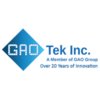
GAO Tek
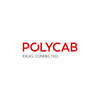
Polycab Wires

CG Power and Industrial Solutions
- Home >
- Interviews >
- BHEL Interview Questions



